USDA programs affect us in countless ways, but it can be difficult to know the ins and outs of the programs available. Below are quick synopses of a few of the more common programs and what impact they have on young farmers. Thinking of one that’s not here? Let us know and we’ll add it!
Beginning Farmer and Rancher Development Program
Environmental Quality Incentives Program
Conservation Stewardship Program
Value-Added Producer Grants
Grain Inspectors, Packers and Stockyard Administrators (GIPSA) rules
——————————————————————————–
Beginning Farmer and Rancher Development Program (BFRDP)
The Beginning Farmer and Rancher Development Program (BFRDP), directed by the USDA’s National Institute of Food and Agriculture (NIFA), is a competitive grant program that provides funding for the education and training of beginning farmers and ranchers. The BFRDP was first rewarded with permanent annual funding with the passage of the 2008 Farm Bill; before this, its was funded inconsistently. In 2012, BFRDP had $19 million available in funding for its standard project grants, as per the dictate of the 2008 Farm Bill. With the upcoming Farm Bill revision in 2013, the funding of the BFRDP will be up for reauthorization (the current extension did not provide any funding for the program).
The BFRDP supports the belief that there are many types of assistance beginning farmers may benefit from when starting out in agriculture. The explicit goal of the program is to “enhance food security by providing beginning farmer and rancher producers and their families in the U.S. with the knowledge, skills and tools needed to make informed decisions for their operations, and enhance their sustainability.” (USDA, National Institute of Food and Agriculture)
So, how does the BFRDP affect you? If you’re a beginning farmer, you can enroll in courses and training programs that have been subsidized by BFRDP. In fact, many of the programs listed on NYFC’s “Regional Farmer Training Opportunities” page have been partially funded in the past by the program. The program rewards grants to various organizations that provide financial and entrepreneurial training, as well as mentor services and apprenticeships, to aspiring farmers. Other groups, such as land-link programs and outreach education programs, are eligible to receive grants. Seminar topics that may be covered by a BFRDP grant include everything from soil health to marketing strategies and business plans.
|
The subsidy from BFRDP made the program affordable for me and many others in my situation. Our class graduated 80 people this year, which means 80 new small businesses are taking off in New York thanks to this program.” -Bryn Roshong, Gardiner, NY |
In 2012 alone, the program funded everything from farm incubator programs in southeast Michigan to financial planning education to Latino/a farmers and ranchers in Missouri and Nebraska, to a sustainable urban farmers program in New Orleans. You can read the entire list of 2012 recipients here. In the words of Bryn Roshong, a participant in a “Farm Beginnings” farm business education program in New York State, “I’m in my second year of running my own farm operation, and Farm Beginnings gave me the tools and resources to get my finances, planning, and marketing on track. The subsidy from BFRDP made the program affordable for me and many others in my situation. Our class graduated 80 people this year, which means 80 new small businesses are taking off in New York thanks to this program.”
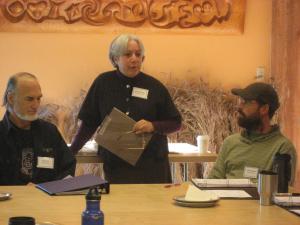
Applicants for BFRDP grants include state, tribal, local or regional groups, whether private or public. These may be community organizations, NGO’s, USDA state agencies, cooperative extension programs, or colleges and universities. In turn these groups must provide education or training assistance to beginning farmers and ranchers. NIFA requires the grant recipients to provide a match in the form of cash or in-kind contributions of at least 25% of the funds provided by the grant. A quarter of the BFRDP’s yearly funds are allocated to address the needs of minority, veteran, immigrant, and female farmers.
Every fiscal year NIFA releases a Request for Applications (RFA); however the RFA for 2013 has not been released due to the reauthorization of the Farm Bill that is currently underway. You can keep an eye out for the new RFA online here. If you’re an organization seeking to educate beginning farmers, please apply! If you’re a farmer, search for subsidized training programs and encourage organizations to look into applying for a grant.
——————————————————————————–
Environmental Quality Incentives Program
The Environmental Quality Incentives Program is a conservation program within the USDA’s Natural Resources Conservation Service (NRCS) that provides financial and technical assistance to farmers for implementing sustainable conservation practices on their land. More broadly, the program is meant to help farmers comply with local, state and federal environmental regulations.
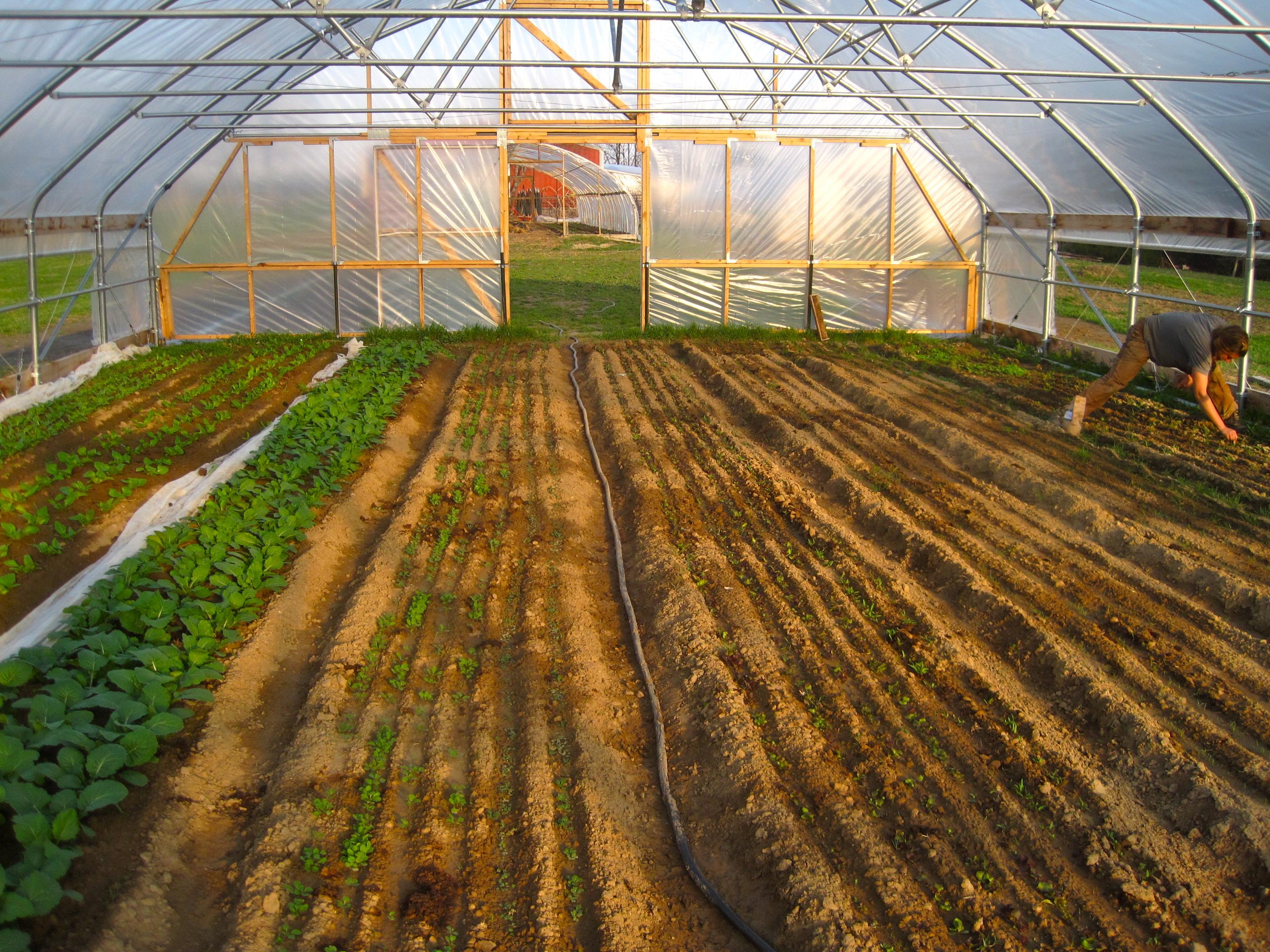
Like many sustainable agriculture incentives, the fate of program is in limbo as a new Farm Bill struggles to take shape, but this is a general overview of the program under the 2008 bill. The National Sustainable Agriculture Coalition also has a good overview.
The program, more commonly referred to as EQIP grants in the alphabet soup of the Federal government, is structured through contracts that can vary from one to ten years, but average two to three years in duration.
Most farmland is eligible under the program, and producers do not need to own the land to apply.
State conservationists and working groups have a large say in determining criteria and priorities for the contracts, so EQIP tends to vary from state to state. For more information about EQIP priorities in your state, check out the NRCS’s state directory before you apply. For example, the New York state conservation office lists several state-specific initiatives including: anaerobic digestion, oil spill prevention and seasonal high tunnels.
Nationally, sixty percent of EQIP funding is reserved for livestock producers. The NRCS has also established nationwide conservation initiatives, which include air quality, on-farm energy, conversion to organic and seasonal high tunnels. EQIP also now lists Organic Conservation Assistance, forest management and energy conservation practices as fundable projects.
The program gives special consideration — a higher percentage is matched in the cost-share program in many states — to historically underserved producers, including beginning farmers.
Farmers can apply for EQIP grants online through their state conservation office’s site. Applications are accepted on an ongoing basis, but there is “cut-off” deadline for reviewing proposals that can vary based on the specific initiative you are applying under, so be sure to scour your state’s website thoroughly. After submission, each application is then ranked based on the state and national priorities.
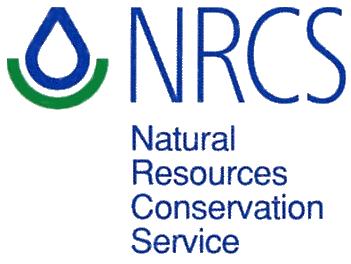
Currently under the 2008 Farm Bill, EQIP grants are capped at $300,000 per person or legal entity, directly or indirectly for any 6-year period (although the USDA can raise that limit to $450,000 for projects of “special environmental significance”). Payment rates are generally capped at 75 percent of the total cost, but again higher rates may be available for beginning farmers (up to 90 percent under the under-served producer provision) or 100-percent in some cases of farmers who sacrifice income as a result of the implementing a new conservation practice.
To make the cost-share system more clear, NRCS now lets farmers know the repayment rates when they first enroll in the program rather than them waiting for receipts to be evaluated.
Again, because the Farm Bill is in such flux, and because EQIP priorities can vary so much from state to state, check with your state’s conservation office early and often for more specific guidance. You can connect with your state conservation office via the NRCS directory. Note that as of this post’s printing, EQIP is not receiving any funding for 2013, but hopefully it will be in future farm bills!
——————————————————————————–
Conservation Stewardship Program (CSP)
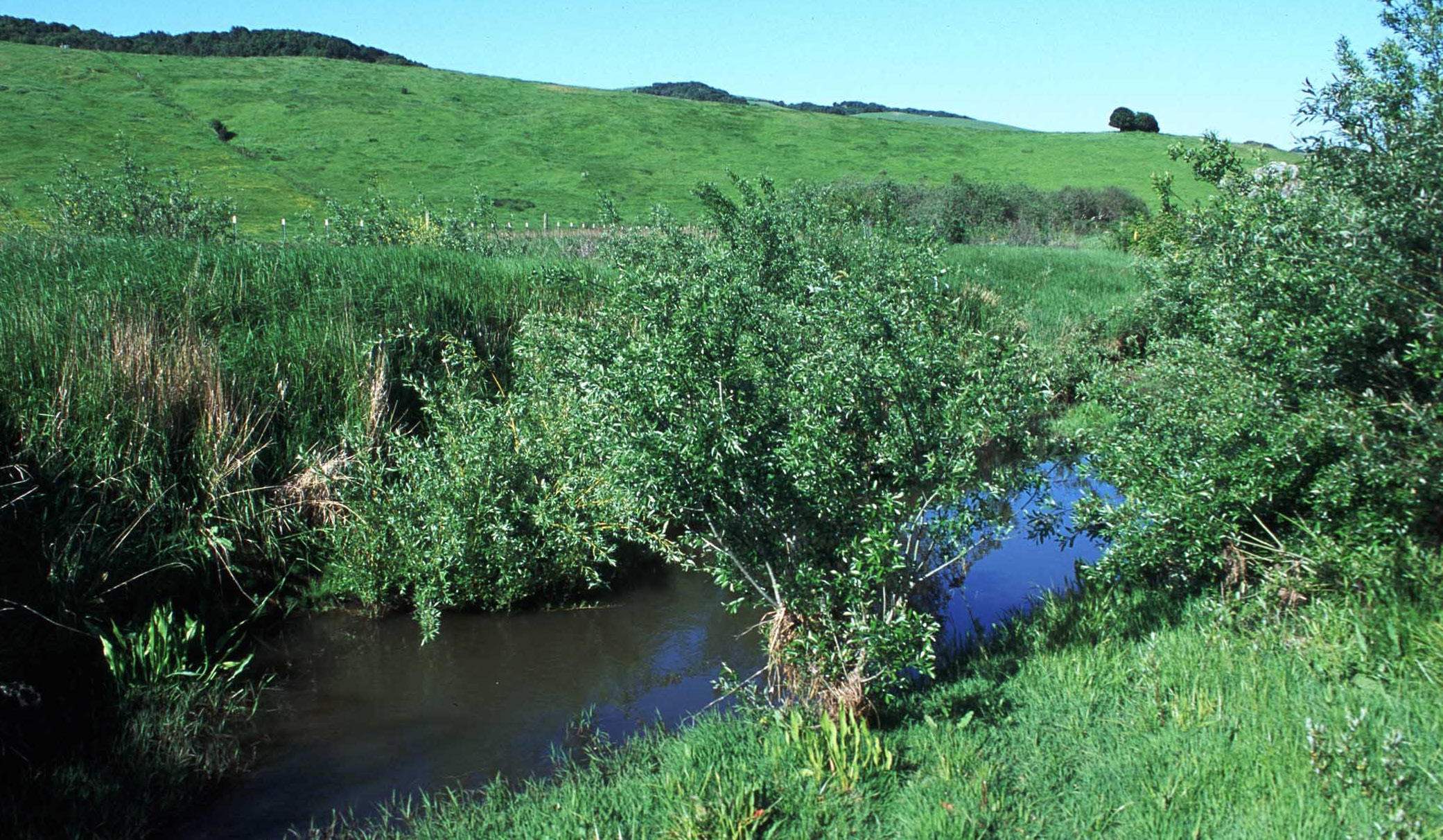
The Conservation Stewardship Program (CSP) is a comprehensive initiative focused on protecting the natural resources connected with agricultural lands and practices. The CSP provides financial and technical incentives for farmers to begin new conservation activities in addition to maintaining their existing conservation efforts. It is awarded based on a point-system for a farm’s utilization of specified ecological techniques; high-scorers “win” a five-year contract during which they receive payment for conservation stewardship.
The CSP focuses on comprehensive planning and continual improvement, and holds much higher ecological standards relative to other federal working-lands conservation programs. Conservation activities that are rewarded by the CSP include everything from building natural buffers around waterways to establishing pollinator habitat improving cover crop rotation.
The Conservation Stewardship Program was first enacted in the 2008 Farm Bill. Unfortunately, due in part to intended budget cuts, farmers were not going to be able to apply for CSP in 2013. This went hand-in-hand with cuts to a wide range of other conservation and beginning farmer programs in the USDA. However, thanks to grassroots support for the program, Congress changed its budget plan to allow farmers to apply for CSP this year. (See the blog post on support for CSP here!)
How do I enroll in CSP?
If you own or rent agricultural lands, including cropland, pasture, rangeland, and forested land, you may enroll all of your acres unless they have been previously a part of denoted federal preservation programs. To find out if CSP is right for your farm, take a look at the CSP self-screening checklist.
Applicants must meet the “stewardship threshold” for one “priority resource concern” at the time they are offered a contract. Stewardship thresholds are standards set by the Natural Resource Conservation Service (NRCS) to protect priority resource concerns, which are most-pressing resource problems specific to individual regions and watersheds. Examples of priority resource concerns include water quality, wildlife habitat, soil erosion, and biodiversity. When applicants meet the stewardship threshold for a specific priority resource concern, they indicate that they have already been using conservation activities to address the problem.
How does the NRCS judge applications?
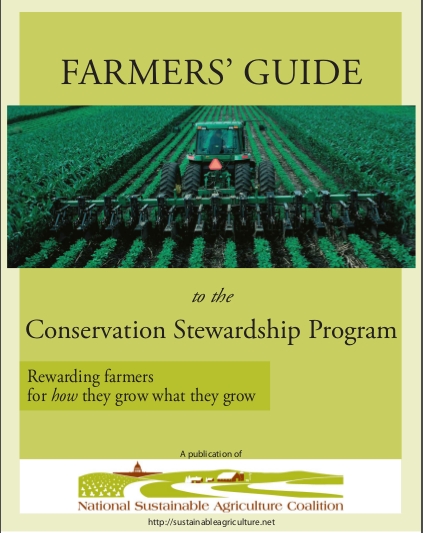
In order to quantify applicants’ conservation activities, CSP utilizes the Conservation Measurement Tool (CMT). The CMT determines conservation performance for existing and new conservation activities and is used for ranking and payment purposes. With the help of NRCS staff, applicant farmers answer CMT questions and points are awarded accordingly. At this point in time, the full list of CMT questions is not available online, but you can contact your local NRCS office to answer questions.
What can be found online, however, is the list of conservation activities that count towards farmers’ CMT score and required stewardship thresholds. These activities are divided into conservation “practices” and “enhancements” – enhancements are worth more points than practices as they go above and beyond expected conservation techniques.
The scores generated by the CMT help NCRS officers to rank applicants; farms with the highest scores are selected until the state’s total number of acres is allocated to participants. Farmers then enter into a five-year contract that solidifies the continuation of conservation activities, the addition of new ones, and how much money the farm will be rewarded. Farms cannot receive more than $40,000 per year.
Is CSP right for me?
If you are a beginning or socially disadvantaged farmer, you will be placed in a separate pool for CSP ranking so as not to compete with large, more established agricultural operations. However, small farms should consider if CSP is right for them. Conservation points are counted per acre, so small-scale farms, even if they utilize great conservation activities, may only receive a few hundred dollars from CSP. Get more information from this comprehensive NSAC guide and the USDA website.
——————————————————————————–
Value-Added Producer Grants (VAPG)
The Value-Added Producer Grants program is another of the USDA’s competitive grants available to beginning farmers. These grants are reserved for farmers that produce a value-added product such as wine, jams or grass-fed beef. Although, the program has since expanded to cover local marketing and labeling campaigns, as well as some on-farm renewable energy projects.
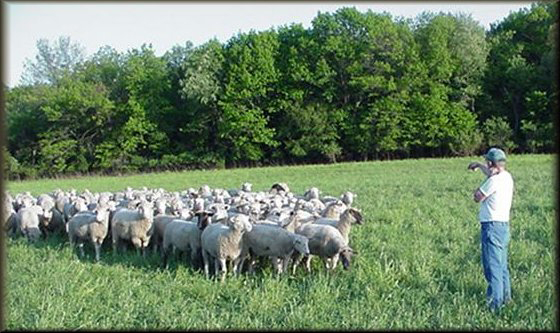
Photo courtesy of http://www.wisconsinlamb.com
The program is currently closed, but may reopen for the next fiscal year, depending on the upcoming Farm Bill process. The USDA estimated $14 million in funding for the 2012 fiscal year. Typically, the USDA begins accepting applications in the summer, with a final deadline in mid-October, for grants that will be awarded the following January.
The program was first introduced in the 2000 Farm Bill, and then expanded in 2002 and 2008 to include more products and activities.
Grants are either given to either develop business plans and conduct a feasibility study, or to acquire working capital for a project. The applicant must match the grant funds in cash or with in-kind contributions, and invest this money first before receiving the grant money.
If you are beginning a new venture, a feasibility study and business plan is probably the best place to start, as applications for working-capital grants generally require that you submit this research anyway. As with many grants, working capital awards can’t be used to repair or construct a building or facility, or to rent or purchase fixed equipment.
The USDA caps grants awards at $100,000 for planning and $300,000 for working-capital projects, respectively. The good news for beginning farmers is that no matter how much grant funding is allocated from year to year, as a young farmer it is important to keep in mind that 10 percent of the total funding is set aside for beginning or socially-disadvantaged farmers.
Check out some example products and activities that could be supported with a VAPG grant:
- Commodity Processing – changing a product’s physical state
- Example products: Wine, cheese, jams, biodiesel
- Market Differentiation (added in 2002) – marketing a product’s special identity or character
- Example products: products with labels including, “organic,” “grass-fed,” or “humane”
- Commodity Segregation – keeping a product isolated during production and distribution
- Example products: “GMO-free”, “No rBGH” labeled products
- Renewable Energy – energy transformation projects on the farm
- Example activities: solar, wind, geothermal or on-farm biodiesel installations
- Local Food – marketing food and products through local markets
- Example activities: “Buy local”/ “Buy fresh” marketing campaigns
- Mid –Tier Value Chain (added in 2008) – linking small-scale producers with local or regional supply networks
- Example activities: “farm to school” or “farm to restaurant” partnerships
The first step of applying begins with reaching out to the USDA’s Rural Development offices. For more information on the grant program, contact the USDA’s rural development branch in your state or look out for the USDA to post a “Notice of Funding Availability” (NOFA) and call for applications.
The National Sustainable Agriculture Coalition’s summary of the program includes some brief descriptions of past grant projects to get the ideas flowing. Finally, the USDA also offers an online eligibility assessment tool here.
——————————————————————————–
Grain Inspection, Packers and Stockyard Administrators (GIPSA) Rules
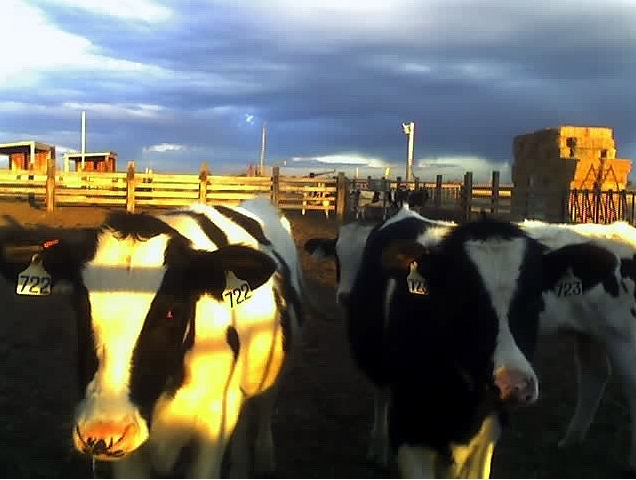
What are the GIPSA Rules?
The new GIPSA rules are named for the Grain Inspection, Packers and Stockyard Administrators arm of the USDA. These rules, passed in the 2008 Farm Bill, require enforcement of the 1921 Packers and Stockyard Act. Since this law was never enforced, large companies have been able to push farmers into unfair contracts. Discrimination against farmers has gone unprosecuted, which these rules seek to remedy.
Weaknesses Prior to the GIPSA Rules
Before these rules, the system only supported large meatpackers and poultry processors and without competition, these companies were free to charge their farmers less than the actual cost to raise their products and could force them into unfair contracts. The savings from food being produced at such a large scale were not passed on to consumers and food prices have inflated considerably in the last few years. Furthermore, the environmental and public health impact of farming at such a large scale was propagated and supported under this system.
What Changes are Proposed?
- One buyer can no longer represent multiple meatpackers at auctions, which reduces competition in bidding on livestock.
- Large cattle and hog factory farms will no longer receive price premiums and secret preferential contracts.
- Prevents companies from requiring prohibitively expensive upgrades to equipment in working order.
- Poultry growers who publicize abusive contracts and punitive measures will no longer face retaliation.
What Will These Rules Change?
Enforcing the Packers and Stockyard Act will mean that meatpackers cannot unduly favor large companies. Greater competition from smaller farms will result in fairer prices for farmers and consumers. Smaller farms will have an easier time producing and selling their products and will receive fair prices, meaning their businesses will be profitable and sustainable.
What Is the Status of the GIPSA Rules?
In 2011, the USDA sent the GIPSA rules to the White House for a final round of approval. However, the end result of editing the rules meant that they were much weaker than initially proposed. While the final revision supported independent poultry farmers, those raising hogs and cattle did not receive any help. A small group of Congressmen sought to pass the remaining rules, but the House blocked funding and no further work has been done. The largest cuts from the GIPSA rules are:
- All producers growing the same animals would receive the same pay
- Any packer, swine producer or live poultry dealer would have been required to retain records detailing and justifying differential pricing
- The cuts removed protection for producers against unfair practices by packers
- Under the proposed rule, samples of each poultry contract would have been required to be published to improve transparency
- If this rule had been enacted, it would have prohibited paying growers less than the base pay
——————————————————————————–
I’m moving home to central wisconsin in the spring. I would like to start a one or two acre self sustaining eco friendly low impact farm utilizing hardy animals bread for cold climates wind and solar power and other renewable resources. Problem is that i would have no way of doing this withous grants and loans. Please help.